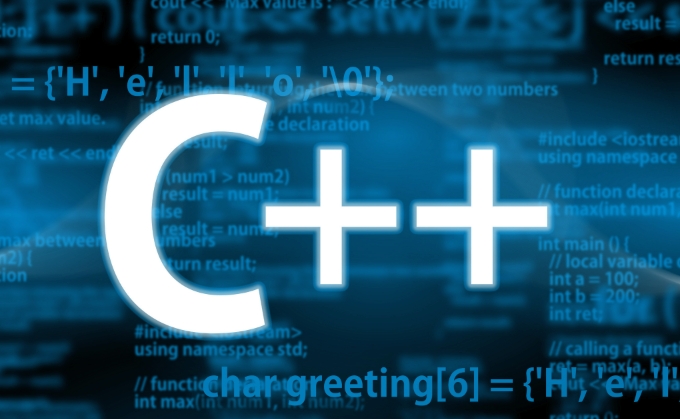C performance optimization tips
Jul 14, 2025 am 01:47 AMThe key to C performance optimization is to understand language features, compiler behavior, and hardware interaction. 1. Use inline functions and const references reasonably, use inline only for small and frequently called functions, and use const & to avoid copy overhead of custom types. 2. Avoid unnecessary memory allocation, reduce the number of memory re-allocations in the container through reserve(), or reuse memory using a memory pool. 3. Design cache-friendly data structures, keep data compact, prioritize continuous memory storage, and consider structure splitting to improve cache hit rate. 4. Make full use of compiler optimization options, such as -O2/-O3, -march=native and -flto, but the volume and performance impact of the optimization level need to be weighed.

The key to C performance optimization is to understand the interaction of language features, compiler behavior, and underlying hardware. Many people only focus on whether the function is implemented when writing code, ignoring performance details. In fact, some small adjustments can bring significant improvements.

1. Use inline functions and const references reasonably
Inline functions ( inline ) can reduce the overhead of function calls, but not all functions are suitable for inline. Inline functions that are too large will increase the code size and affect the instruction cache efficiency. It is recommended to use inline only for small, frequently called functions.

For parameter transfers, especially custom types, try to use const & to avoid unnecessary copying. For example:
void process(const std::string& input); // Good practice
Instead:

void process(std::string input); // May cause copy overhead
This applies not only to function parameters, but also to cases where objects are frequently created in return values or loops.
2. Avoid unnecessary memory allocation and release
Frequent dynamic memory operations (such as new/delete , malloc/free ) are performance killers. Especially for containers like std::vector and std::string , when changing the length frequently, reserve space ( reserve() ) should be considered to reduce the number of memory re-allocations.
for example:
std::vector<int> v;
v.reserve(1000); // Allocate space in advance for (int i = 0; i < 1000; i) {
v.push_back(i);
}This way, many fewer memory operations than not reserving space.
In addition, consider using object pools or custom memory pools to reuse memory, especially in high-frequency calls.
3. Pay attention to data structure layout and cache friendliness
CPU cache has a very big impact on performance. When designing data structures, try to make the accessed data "compact" and improve the cache hit rate.
- Put fields that are often used together.
- Try to use continuous memory storage (such as
std::vectoris better thanstd::list). - Avoid excessive use of pointer jumps and reduce cache line miss.
For example, if you have a structure:
struct Data {
int id;
double value;
bool active;
}; When traversing a large number of Data objects, if only id and value are accessed, the existence of active may waste cache space. In this case, splitting the structure (SoA style) may be more efficient.
4. Compiler optimization options cannot be ignored
Modern C compilers (such as GCC, Clang, MSVC) have strong optimization capabilities. When developing, do not just use the default -O0 or -O1 . When online or performing performance tests, -O2 or -O3 should be turned on.
But also note:
-
-O3sometimes increases the binary volume and even slows down in some scenarios. - Using
-march=nativecan enable the compiler to make better optimizations for the current machine architecture. - Enabling
-fltofor link time optimization can also bring additional benefits.
Basically that's it. Some techniques may seem simple, but are easily overlooked in actual projects.
The above is the detailed content of C performance optimization tips. For more information, please follow other related articles on the PHP Chinese website!

Hot AI Tools

Undress AI Tool
Undress images for free

Undresser.AI Undress
AI-powered app for creating realistic nude photos

AI Clothes Remover
Online AI tool for removing clothes from photos.

Clothoff.io
AI clothes remover

Video Face Swap
Swap faces in any video effortlessly with our completely free AI face swap tool!

Hot Article

Hot Tools

Notepad++7.3.1
Easy-to-use and free code editor

SublimeText3 Chinese version
Chinese version, very easy to use

Zend Studio 13.0.1
Powerful PHP integrated development environment

Dreamweaver CS6
Visual web development tools

SublimeText3 Mac version
God-level code editing software (SublimeText3)

Hot Topics
 Implementing effective indexing strategies for large MySQL tables
Jul 05, 2025 am 02:46 AM
Implementing effective indexing strategies for large MySQL tables
Jul 05, 2025 am 02:46 AM
An effective indexing strategy needs to be combined with query patterns, data distribution and business needs, rather than blindly added. 1. Understand common query paths, prioritize the establishment of joint indexes for multi-field combination, sorting or grouping operations, and pay attention to index order; 2. Avoid excessive indexing to reduce write overhead, regularly clean redundant indexes, and view unused indexes through the system view; 3. Use overlay indexes to make the index itself contain the fields required for query, reduce table back operations, and improve reading efficiency; 4. Consider partitioning and indexing for super-large tables, select partition keys that are consistent with the query conditions, and establish a reasonable index for each partition, but the complexity and performance improvement are required.
 What is function hiding in C ?
Jul 05, 2025 am 01:44 AM
What is function hiding in C ?
Jul 05, 2025 am 01:44 AM
FunctionhidinginC occurswhenaderivedclassdefinesafunctionwiththesamenameasabaseclassfunction,makingthebaseversioninaccessiblethroughthederivedclass.Thishappenswhenthebasefunctionisn’tvirtualorsignaturesdon’tmatchforoverriding,andnousingdeclarationis
 How to get a stack trace in C ?
Jul 07, 2025 am 01:41 AM
How to get a stack trace in C ?
Jul 07, 2025 am 01:41 AM
There are mainly the following methods to obtain stack traces in C: 1. Use backtrace and backtrace_symbols functions on Linux platform. By including obtaining the call stack and printing symbol information, the -rdynamic parameter needs to be added when compiling; 2. Use CaptureStackBackTrace function on Windows platform, and you need to link DbgHelp.lib and rely on PDB file to parse the function name; 3. Use third-party libraries such as GoogleBreakpad or Boost.Stacktrace to cross-platform and simplify stack capture operations; 4. In exception handling, combine the above methods to automatically output stack information in catch blocks
 How to call Python from C ?
Jul 08, 2025 am 12:40 AM
How to call Python from C ?
Jul 08, 2025 am 12:40 AM
To call Python code in C, you must first initialize the interpreter, and then you can achieve interaction by executing strings, files, or calling specific functions. 1. Initialize the interpreter with Py_Initialize() and close it with Py_Finalize(); 2. Execute string code or PyRun_SimpleFile with PyRun_SimpleFile; 3. Import modules through PyImport_ImportModule, get the function through PyObject_GetAttrString, construct parameters of Py_BuildValue, call the function and process return
 Strategies for MySQL Query Performance Optimization
Jul 13, 2025 am 01:45 AM
Strategies for MySQL Query Performance Optimization
Jul 13, 2025 am 01:45 AM
MySQL query performance optimization needs to start from the core points, including rational use of indexes, optimization of SQL statements, table structure design and partitioning strategies, and utilization of cache and monitoring tools. 1. Use indexes reasonably: Create indexes on commonly used query fields, avoid full table scanning, pay attention to the combined index order, do not add indexes in low selective fields, and avoid redundant indexes. 2. Optimize SQL queries: Avoid SELECT*, do not use functions in WHERE, reduce subquery nesting, and optimize paging query methods. 3. Table structure design and partitioning: select paradigm or anti-paradigm according to read and write scenarios, select appropriate field types, clean data regularly, and consider horizontal tables to divide tables or partition by time. 4. Utilize cache and monitoring: Use Redis cache to reduce database pressure and enable slow query
 How to fix slow performance in Windows 10
Jul 05, 2025 am 02:23 AM
How to fix slow performance in Windows 10
Jul 05, 2025 am 02:23 AM
When Windows 10 slows down, it does not necessarily require changing the computer, but it can often be improved by optimizing settings and cleaning resources. 1. Check and disable unnecessary boot program, open the task manager and switch to the "Startup" tab for management; 2. Close the program that secretly occupies resources in the background, go to "Settings>System>Battery/Memory/Processor" to view and close infrequently used applications; 3. Use the "Disk Cleanup" tool to delete temporary files, the system updates residual and recycling bin content, and enable "Storage Awareness" automatic cleaning; 4. Regularly optimize the drive for HDD hard disks, and SSD does not require manual operation; 5. Update key hardware drivers, especially graphics card and network card drivers, to ensure full performance; 6. In "System Properties>gt
 How does std::move work in C ?
Jul 07, 2025 am 01:27 AM
How does std::move work in C ?
Jul 07, 2025 am 01:27 AM
std::move does not actually move anything, it just converts the object to an rvalue reference, telling the compiler that the object can be used for a move operation. For example, when string assignment, if the class supports moving semantics, the target object can take over the source object resource without copying. Should be used in scenarios where resources need to be transferred and performance-sensitive, such as returning local objects, inserting containers, or exchanging ownership. However, it should not be abused, because it will degenerate into a copy without a moving structure, and the original object status is not specified after the movement. Appropriate use when passing or returning an object can avoid unnecessary copies, but if the function returns a local variable, RVO optimization may already occur, adding std::move may affect the optimization. Prone to errors include misuse on objects that still need to be used, unnecessary movements, and non-movable types
 What is a POD (Plain Old Data) type in C ?
Jul 12, 2025 am 02:15 AM
What is a POD (Plain Old Data) type in C ?
Jul 12, 2025 am 02:15 AM
In C, the POD (PlainOldData) type refers to a type with a simple structure and compatible with C language data processing. It needs to meet two conditions: it has ordinary copy semantics, which can be copied by memcpy; it has a standard layout and the memory structure is predictable. Specific requirements include: all non-static members are public, no user-defined constructors or destructors, no virtual functions or base classes, and all non-static members themselves are PODs. For example structPoint{intx;inty;} is POD. Its uses include binary I/O, C interoperability, performance optimization, etc. You can check whether the type is POD through std::is_pod, but it is recommended to use std::is_trivia after C 11.






